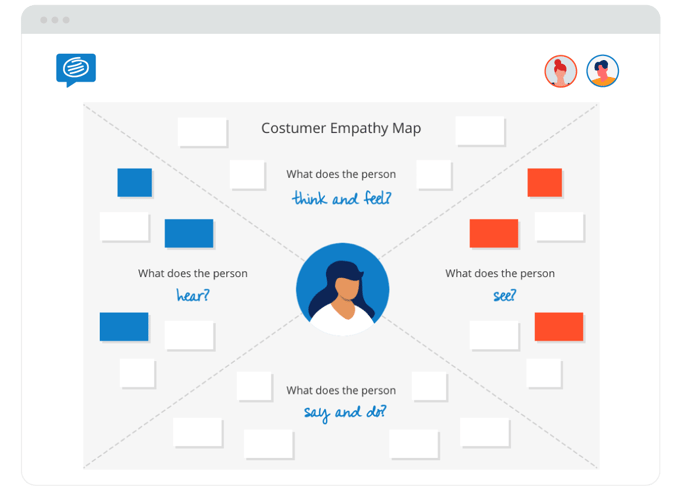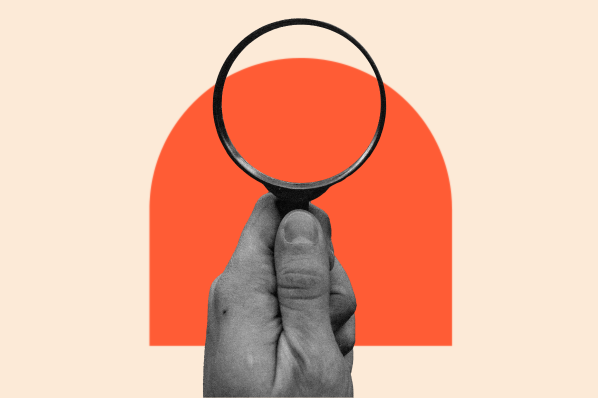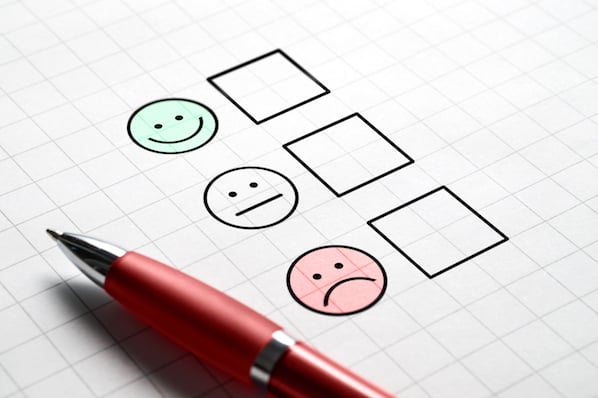And, if asking isn't possible -- as in, you can't ask every single customer what they think and feel about every little situation surrounding your products and services -- you have to do your best to place yourself in the customer's shoes.
This is where an empathy map can be beneficial.
What's an empathy map?
An empathy map is a tool used when collecting data about customers to better understand your target customer base. Similar to a user persona, empathy maps visualize customer needs, condense customer data into a brief chart, and help you consider what customers want -- not what you think they want.
For instance, there are two clear customer sides when it comes to the epic Starbucks versus Dunkin' debate. Some may assume that the reason some customers are die-hard, loyal fans of one over the other is because of the taste of the coffee or the specific pastries and sandwiches provided.
Deeper research -- with the help of a handy empathy map -- can reveal that there's so much more to it: Starbucks lovers, perhaps, prefer Starbucks because of its homey feel. Starbucks locations are often filled with squashy armchairs, dimmed lighting, attractive artwork, and a variety of products that can fit breakfast, lunch, or dinner. Sitting in a Starbucks feels like hanging out at your local, corner cafe or sipping a mug of homemade coffee on the couch with your family. When you enter a Starbucks, you want to stay for a while.
Dunkin' is the place for busy Americans. Dunkin' fanatics live for the words "take-out," "to-go," and "on-the-way." They need a place that is always there for them, whether they have a meeting at 9:00 a.m. or a baseball game at 5:00 p.m. A classic Dunkin' iced coffee is the drink you can have in July or January and still enjoy. "America Runs on Dunkin'" because Dunkin' customers are always running to their next thing and need a sip of home to ground them.
That may seem very deep for two gargantuan, coffeehouse-meets-restaurant chains, but it's true. There are endless competitors within any major industry, so it's all about brand positioning -- what place a brand occupies in a customer's mind that sets it apart from competitors.
An empathy map can help you accomplish this without playing a guessing game. It typically covers what customers think and feel, say and do, and see and hear, as well as what their pains and gains are.

Source: Conceptboard
In the above example, each section is divided to create a more organized design. The easier to read it is, the quicker your team will be able to comprehend your customer base and make edits in the future.
You can use a template like this one from Conceptboard, or you can create your own. What's more important is the information that you fill in.
How to Create an Empathy Map
1. Decide on a customer persona.
Before diving in, it's important to understand who your customer is. Start by analyzing customer data. Figure out some average demographics and psychographics associated with your customer base.
For instance, according to Chron.com, the average Starbucks customer profile includes high-income high-spenders, busy people living in cities, and healthier professionals, among others. Using these insights can help Starbucks come up with a customer profile, such as "Jackie, 28 years old, lives in Boston and makes an income of $90,000 as an account executive. She regularly attends spin classes, is vegetarian, and enjoys sushi and rooftop bars." Similarly, you should come up with a customer persona to which the empathy map is directed.
2. Consider the following questions.
Before coming up with ideas, you want to have some structure. Consider these questions to get your team thinking about the customer in a new light. It's better to answer these questions in the general sense of your customer's life, not honed in on their experience with your products or services.
1. What does the customer think and feel?
What are their beliefs, dreams, worries, and daily emotions? What makes them happy, sad, scared, emotional, and angry?
2. What does the customer hear?
Who do they hear from? What media are they influenced by?
3. What does the customer see?
What are the sights surrounding their home, job, and other activities? Who do they see?
4. What does the customer say and do?
How do they behave in different settings -- in public, in private, with coworkers, with friends and family? How do they speak to others?
5. What are the customer's pains?
What frustrations and stresses do they encounter? What risks and threats do they face?
6. What are the customer's gains?
What do they need to be successful and achieve their goals? How do they measure success?
3. Have your team write down everything they can think of.
Keeping those questions in mind, outline a map on a whiteboard or on a large poster. Divide off the necessary sections, but leave plenty of room for ideas to bud. This is the ideation phase. Hand each employee a dry-erase marker or permanent marker and give them the space to write whatever they can imagine.
This phase works best when at least one hour is set aside. Brainstorming is done best when people don't second-guess or self-critique themselves. It should be a judgment-free zone. Sometimes, the best ideas don't emerge until you've already come up with 20, 50, or 100 so-so ones first.
4. Revise and create a final draft.
Now that you have several ideas to choose from, you can finally get to crafting your final, edited empathy map. Look for patterns; if several people wrote about a similar pain, you'll probably want to consolidate all their ideas into one sticky note under "Pains."
An effective empathy map isn't overflowing with sticky notes. You want it to be clear, concise, and easily skimmable. Even if your team came up with 40 items for things your customers see, it's probably best to choose the top 10 or so that seem most relevant. If you're working at Starbucks, it might not be so relevant that your customers see street signs and cars as that could be generalized to most consumers.
When your map has an equal and valid number of items for each category and accurately depicts your customer profile, you're all done! Use this empathy map whenever you're considering releasing new products and services, updates, marketing materials, etc. to ensure that your deliverables will be appropriate for your average customer.
To learn more, read this post on how to prevent information overload next.
User Testing
.png?width=112&height=112&name=Image%20Hackathon%20%E2%80%93%20Vertical%20(30).png)






![5 Qualitative Research Methods Every UX Researcher Should Know [+ Examples]](https://53.fs1.hubspotusercontent-na1.net/hubfs/53/qualitative%20reseach%20methods_featured.png)
![How the Serial Position Effect Influences Your Users [Cheat Sheet]](https://53.fs1.hubspotusercontent-na1.net/hubfs/53/shoppers%20making%20purchasing%20decisions%20off%20of%20the%20serial%20position%20effect.jpg)



